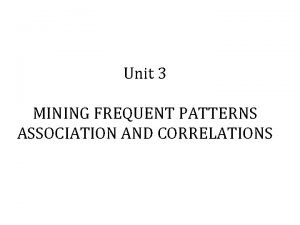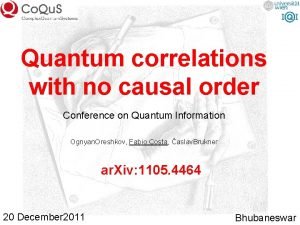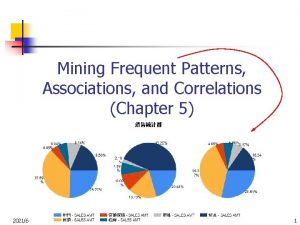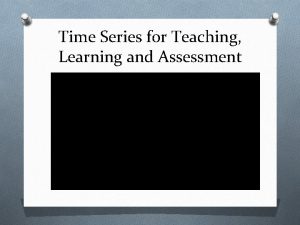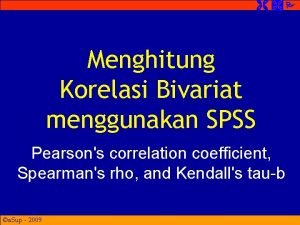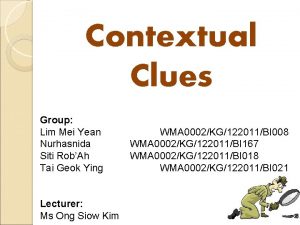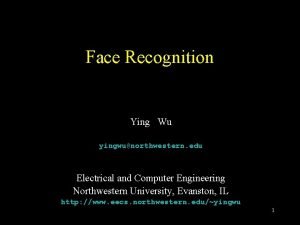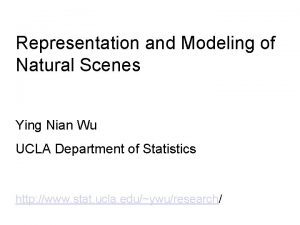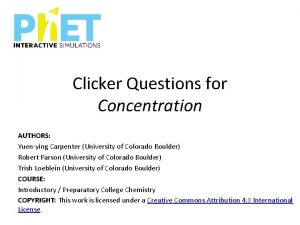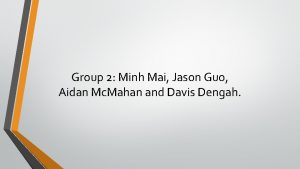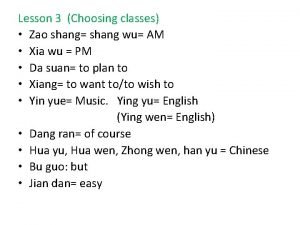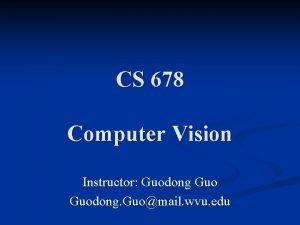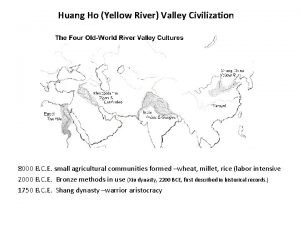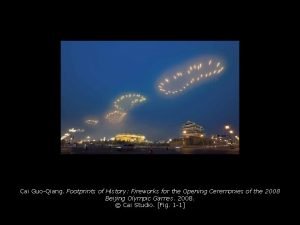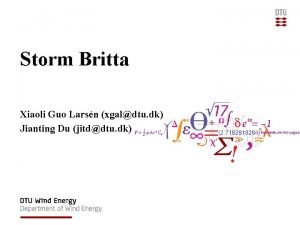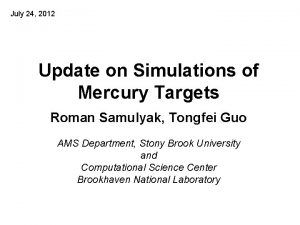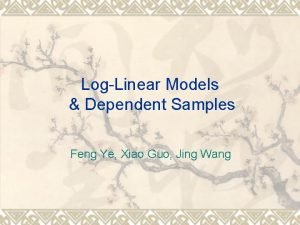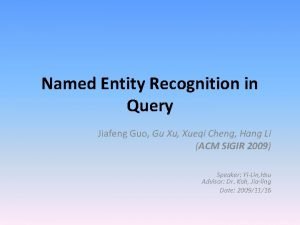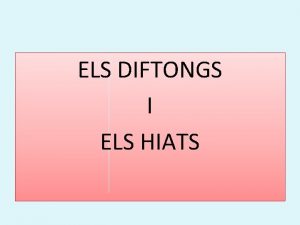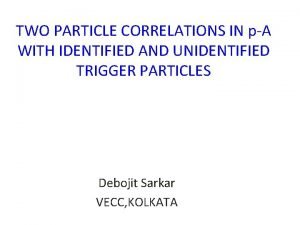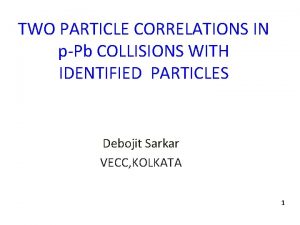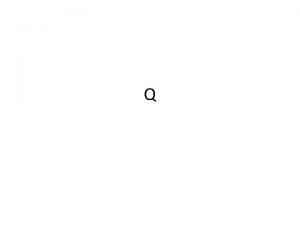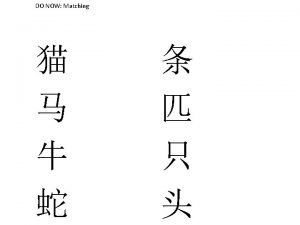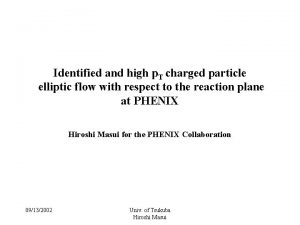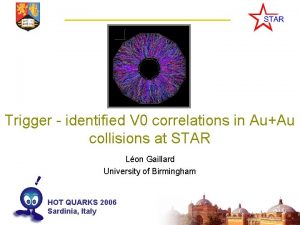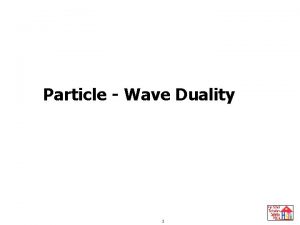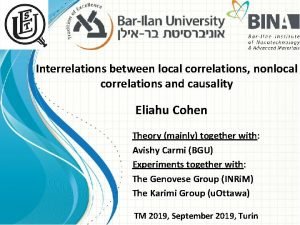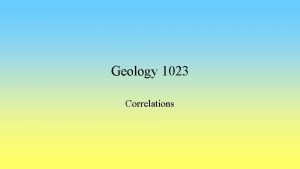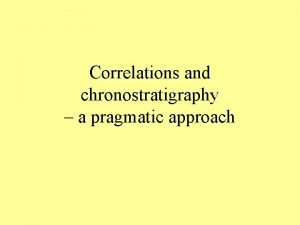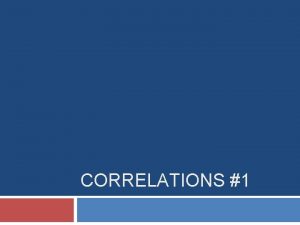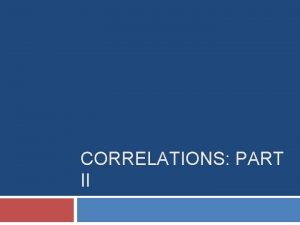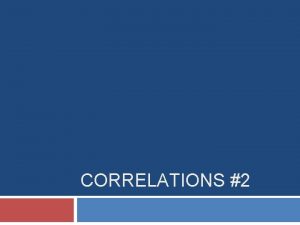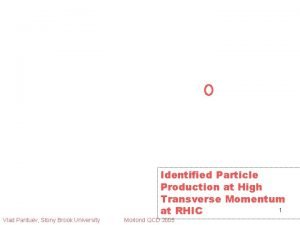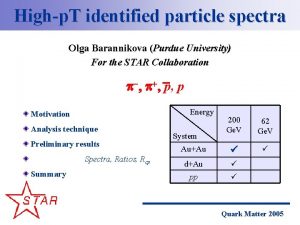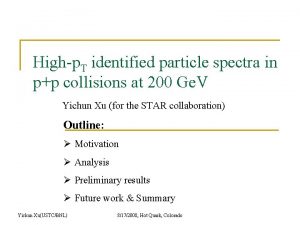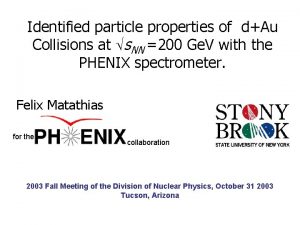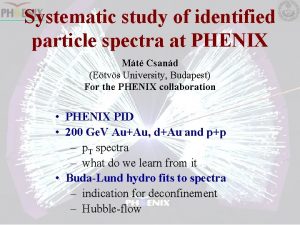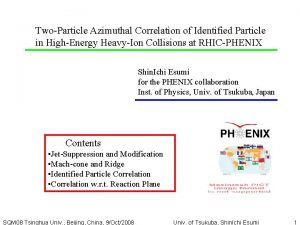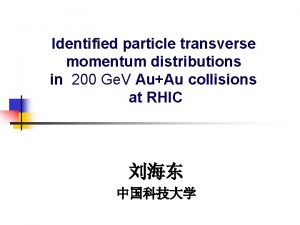Identified High p T particle Correlations Ying Guo
































- Slides: 32

Identified “High” p. T particle Correlations Ying Guo Wayne State University For STAR Collaboration Hot Quark 2004

Outline n Introduction n Data analysis n Preliminary results n Discussion

Motivation: Ø Ø Ø partonic energy loss Get a better understanding of the high p. T azimuthal correlations Particle identified jet correlation study provides us additional information about the jet quenching and particle production mechanisms. The strange particle identified jet correlation can be used as a probe to study the flavor dependence of the strong interaction and the fragmentation process.

Phys. Rev. Lett. 91 (2003) 172302 Phys. Rev. Lett. 90 (2003) 082302 nucl-ex/0407007 Medium Quench effect of the High p. T particles Potential improvement of the original measurements Øbackground subtraction method Øvariable away side range (Δφ)

Jet profile Reconstruction down to low p. T: 4. 0 Gev/c<p. T, trigger <6. 0 Gev/c, 0. 15 Gev/c<p. T, associate <5. 0 Gev/c syst. error Away Fuqiang’s QM 2004 talk.

Sample of correlation Function: Uncorrelated background • Jet Fragmentation (near side) reshaped by flow multiplicity Phys. Rev. Lett. 90 (2003) 032301 • Jet quenching (away side) Same side • Momentum conservation (away side) • Other particle production mechanism Away side Coalescence, recombination

Data Analysis Methods: Same Side Background pp: q. Nicolas Borghini et al. Phys. Rev. C 62, 034902(2000). Au + Au: Gaussian Fit of back side: Cosine Fit of back side (momentum balance): Parameters are compared for different fits for two different p. T cuts as the function of centralities

Λ +h (charged hadrons) correlations Au. Au and pp 0 -5% 30 -50% 5 -10% 50 -70% 10 -30%

Λ +h correlations Au. Au (cosine fit)

Width (Λ+h) Cosine fit Gaussian fit 1. 5<p. T, trigger<3. 0, 1. 5<p. T, asso<3. 0 2. 5<p. T, trigger<4. 0, 1. 7<p. T, asso<2. 5

Associated particle yields (Λ+h) Cosine fit Gaussian fit 1. 5<p. T, trigger<3. 0, 1. 5<p. T, asso<3. 0 2. 5<p. T, trigger<4. 0, 1. 7<p. T, asso<2. 5

AA/pp (Λ+h) Gaussian fit 1. 5<p. T, trigger<3. 0, 1. 5<p. T, asso<3. 0 2. 5<p. T, trigger<4. 0, 1. 7<p. T, asso<2. 5 No pp reference Large AA/pp ratio for the same side ØTrigger Bias? Cosine fit X N Wang, nucl-th/0405017

same and away side yields of different particle species

Same side width of different particle species Anti Lambda K 0 short

PHENIX measurement from QM 2004 SAME SIDE

PHENIX measurement from QM 2004 AWAY SIDE

1. 5 Ge. V/c < p. T, trig, p. T, asso<3. 0 Ge. V/c

Summary: n n We can measure identified particle correlations For central collisions, large width(>π/2~1. 6) of the back side indicates a momentum balance shape and collapse of the Jet structure. ☺ Same Measurement side AA/pp ratioofappears be largeus in the N couldtoprovide intermediate p. T range information about how the jet get quenched inside the medium, what is the scare of Trigger particleinteracted species dependence: particles with the quenched jet. ¨ comparable to PHENIX measurements ¨ No significant particle species dependency ¨ No strong centrality dependency, need further study on the systematic

Backup


Hh AA/pp ratio for G fit

Momentum Balance measurement comparing to balancing over the large amount of particles by assuming α ~ 1. 0

Back side correlations between charged hadrons: 5. 4 < p. T trigger < 6. 5 Ge. V/c 2. 5 < p. T associated < 3. 7 Ge. V/c 1/Ntrigger d. N/d(∆Φ) 3. 7 < p. T trigger < 4. 5 Ge. V/c Fig. 12 Same side and back side as function of Trigger PT ∆Φ (radians) same side is calculated by integrating the Gaussian component and the back side is calculated by integrated the cosine component. Notices that there is a clear back side signal for higher p. T, trigger values 6. 5 < PT trigger <10 Ge. V/c 2. 5 < P T associated <3. 7 Ge. V/c 2. 5 < p. T associated < 3. 7 Ge. V/c 1/Ntrigger d. N/d(∆Φ) 4. 5 < p. T trigger < 5. 4 Ge. V/c Trigger PT ∆Φ (radians) Fig. 11 Charged Hadrons correlations for different trigger PT range ∆Φ (radians) Fitting Function: Fig. 13 Trigger PT In Fig. 13 the Ccos fit values are compared to an estimate of the momentum conservation effect [6].

Hence α can be measured by studying the statistical p. T fluctuations of the back side jet cone compared to inclusive background

Uncorrelated backgrounds Seems works pretty well!!

L+h cos fit 1

L+h vs. Anti-L+h (most central)

L+h cut 2

al+h cos fit

K 0 short +h fit

h+h AA

Hh fit
 Mining frequent patterns associations and correlations
Mining frequent patterns associations and correlations Quantum correlations with no causal order
Quantum correlations with no causal order Mining frequent patterns associations and correlations
Mining frequent patterns associations and correlations Spurious correlations
Spurious correlations Korelasi 6 pair
Korelasi 6 pair Illusory correlations ______.
Illusory correlations ______. Eclat algorithm
Eclat algorithm Hidespon
Hidespon Maya lin
Maya lin Hanshu xu uconn
Hanshu xu uconn Lim mei ying
Lim mei ying Dr ying wu
Dr ying wu Ying wu northwestern
Ying wu northwestern Ying nian wu
Ying nian wu Yuen ying carpenter
Yuen ying carpenter Minh mai md
Minh mai md Zao shang hao jung wo
Zao shang hao jung wo Guodong guo
Guodong guo Huang ho valley
Huang ho valley Siyao guo
Siyao guo Lixiong guo
Lixiong guo Chuanxiong guo
Chuanxiong guo Cai guo qiang footprints of history
Cai guo qiang footprints of history Pu tao you
Pu tao you Xiaoli guo larsén
Xiaoli guo larsén Practical path guiding
Practical path guiding Sujian guo
Sujian guo Tongfei guo
Tongfei guo Dr grace guo
Dr grace guo Feng guo symmetry
Feng guo symmetry Sujian guo
Sujian guo Jiafeng guo
Jiafeng guo Exercicis diftongs i hiats amb solucions
Exercicis diftongs i hiats amb solucions
